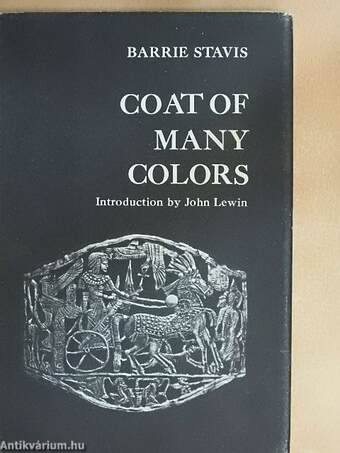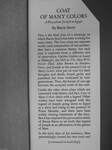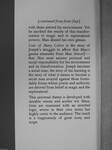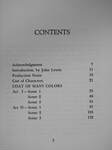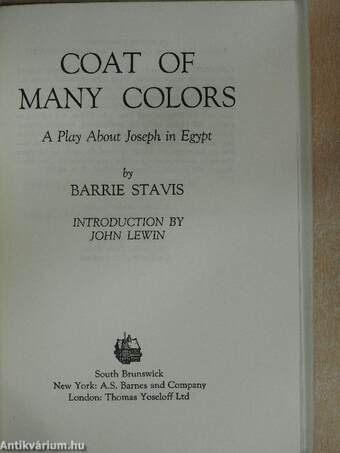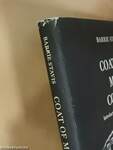1.067.894
kiadvánnyal nyújtjuk Magyarország legnagyobb antikvár könyv-kínálatát

VISSZA
A TETEJÉRE
JAVASLATOKÉszre-
vételek
Coat of many colors
A Play About Joseph in Egypt
| Kiadó: | A. S. Barnes and Co., Inc.-Thomas Yoseloff Ltd. |
|---|---|
| Kiadás helye: | South Brunswick |
| Kiadás éve: | |
| Kötés típusa: | Félvászon |
| Oldalszám: | 143 oldal |
| Sorozatcím: | |
| Kötetszám: | |
| Nyelv: | Angol |
| Méret: | 22 cm x 15 cm |
| ISBN: | |
naponta értesítjük a beérkező friss
kiadványokról
naponta értesítjük a beérkező friss
kiadványokról
Fülszöveg
COAT OF MANY COLORS
A Play about Joseph in Egypt By Barrie Stavis
This is the final play of a tetralogy on which Barrie Stavis has been working for many years. The four plays are separate works, each independent of one another; they have a common theme, but each play is explored from a different axis of observation. Galileo Galilei in Lamp at Midnight, Joe Hill in The Man Who Never Died, John Brown in Harpers Ferry, and Joseph in the present Coat of Many Colors were put on trial for their thoughts and deeds, found guilty and punished, but were vindicated by later generations. Thus, the heresy of one age becomes the accepted truth of the next.
Unlike the other three plays which are concerned with history and fact, Coat of Many Colors deals with a legend. Other writers have been intrigued with this legend of Joseph going down to Egypt as a slave and rising to the position of Prime Minister, and there have been widely varying treatments of the story. But it has required the... Tovább
Fülszöveg
COAT OF MANY COLORS
A Play about Joseph in Egypt By Barrie Stavis
This is the final play of a tetralogy on which Barrie Stavis has been working for many years. The four plays are separate works, each independent of one another; they have a common theme, but each play is explored from a different axis of observation. Galileo Galilei in Lamp at Midnight, Joe Hill in The Man Who Never Died, John Brown in Harpers Ferry, and Joseph in the present Coat of Many Colors were put on trial for their thoughts and deeds, found guilty and punished, but were vindicated by later generations. Thus, the heresy of one age becomes the accepted truth of the next.
Unlike the other three plays which are concerned with history and fact, Coat of Many Colors deals with a legend. Other writers have been intrigued with this legend of Joseph going down to Egypt as a slave and rising to the position of Prime Minister, and there have been widely varying treatments of the story. But it has required the provocative talent of Barrie Stavis to set forth this legend of Joseph as an affirmation of the genius of Man.
In the early days of his existence, Man painstakingly created his own tools and
{continued on back flap)
(icontinued from front flap)
with them altered his environment. Yet he ascribed the results of this transformation to magic and to supernatural powers; Man denied his own genius.
Coat of Many Colors is the story of Joseph's struggle to affirm that Man's genius emanates from Man himself — that Man must assume personal and social responsibility for his environment and its transformation. Joseph becomes a social man; the story of his learning is the story of what it means to become a social man arrayed against those formidable forces whose power and authority are derived from belief in magic and the supernatural.
This universal theme is developed with amiable venom and acerbic wit. Situations are examined with an inverted logic, severe in their own terms but highly comic to the audience. The result is a tragicomedy of great irony and scope. Vissza



